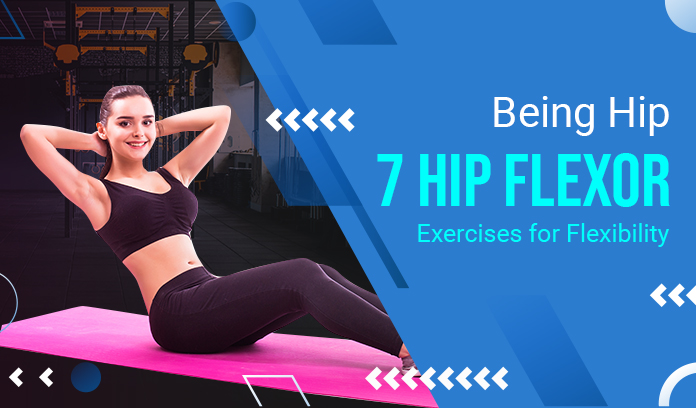It’s important to stay hip to the motions that keep your hip in flexion!
The hip flexors play a crucial role in everyday movements.
These muscles are responsible for flexing the hip joint, allowing us to lift our legs and perform activities like walking, running, and kicking.
However, prolonged sitting and a lack of mobility can lead to tightness and weakness in the hip flexors, potentially leading to discomfort or decreased range of motion.
We will explore seven effective hip flexor exercises that can help improve flexibility, reduce tightness, and strengthen these important muscles. Explore hip flexor exercises and learn how they can benefit your overall hip health.
Lunges:
Lunges target the hip flexors and promote flexibility and strength.
- Start by standing with your feet hip-width apart.
- Step forward with your right foot, lowering your body until your right thigh is parallel to the ground and your left knee is almost touching the floor.
- Keep your torso upright and engage your core.
- Push off with your right foot, returning to the starting position.
- Repeat on the other side, alternating lunges for several repetitions.
Standing Hip Flexor Stretch:
This stretch targets the hip flexors and can be done anywhere with stable support.
- Stand tall with your feet hip-width apart.
- Take a step forward with your right foot, bending your right knee and keeping your left leg straight.
- Slowly shift your weight forward, feeling a stretch in the front of your left hip.
- Hold the stretch for 20-30 seconds, then switch legs and repeat.
Leg Swings:
Leg swings are dynamic exercises that improve hip mobility and flexibility.
- Find a sturdy support, such as a wall or pole, and stand facing it.
- Hold onto the support for balance.
- Swing your right leg forward and backward in a controlled manner, focusing on the movement coming from your hip joint.
- Perform 10-15 swings, then switch to the other leg.
Butterfly Stretch:
The butterfly stretch targets the hip adductors and hip flexors, promoting flexibility and mobility.
- Sit on the floor and bring the soles of your feet together, allowing your knees to fall out to the sides.
- Use your hands to gently press down on your thighs, feeling a stretch in your inner thighs and hips.
- Maintain an upright posture and hold the stretch for 20-30 seconds.
Knee-to-Chest Stretch:
This stretch targets the hip flexors and helps alleviate tightness and improve flexibility.
- Lie on your back with your legs extended.
- Bring one knee toward your chest, using your hands to gently pull it closer.
- Hold the stretch for 20-30 seconds, then switch legs and repeat.
Hip Flexor March:
This exercise targets the hip flexors and improves their strength and endurance.
- Stand tall with your feet hip-width apart.
- Lift your right knee toward your chest, keeping your core engaged and maintaining an upright posture.
- Lower your right foot back to the ground, then lift your left knee in the same manner.
- Continue alternating knee lifts, as if marching in place, for 10-15 repetitions on each leg.
Hip Flexor Bridge:
The hip flexor bridge activates the hip flexors and glutes while improving overall core stability.
- Lie on your back with your knees bent and feet flat on the floor, hip-width apart.
- Engage your core and squeeze your glutes as you lift your hips off the ground, creating a straight line from your knees to your shoulders.
- Hold the bridge position for a few seconds, then lower your hips back down.
- Repeat for 10-12 repetitions, focusing on proper form and engaging the hip flexors and glutes.
Conclusion:
Incorporating hip flexor exercises into your fitness routine can help improve flexibility, reduce
tightness, and strengthen these important muscles.
Lunges, hip flexor stretches, leg swings, butterfly stretches, knee-to-chest stretches, hip flexor marches, and hip flexor bridges are effective exercises to target the hip flexors.
Remember to warm up before performing these exercises and listen to your body’s limits. If you have any pre-existing conditions or concerns, consult with a healthcare professional or a qualified fitness trainer before starting a new exercise routine.
By incorporating these exercises regularly, you can promote hip health, enhance performance, and reduce the risk of discomfort or injury in the hip area.

